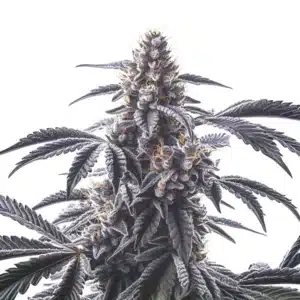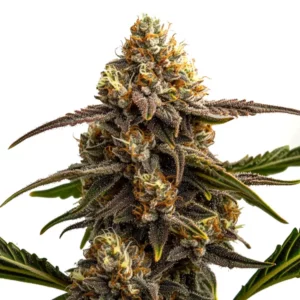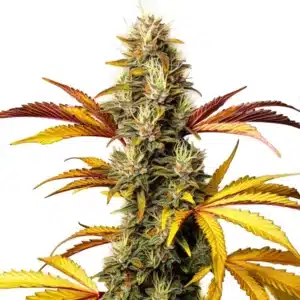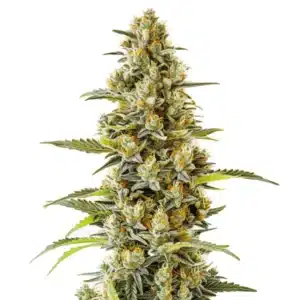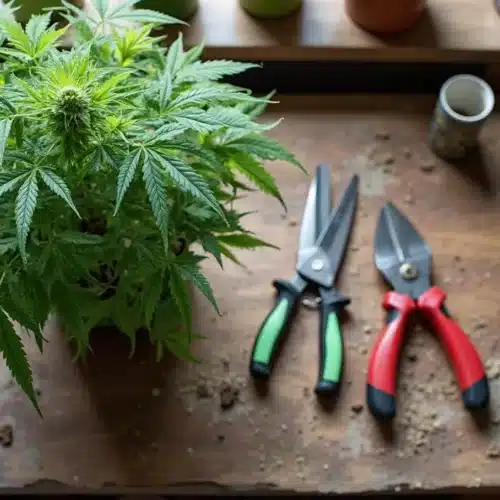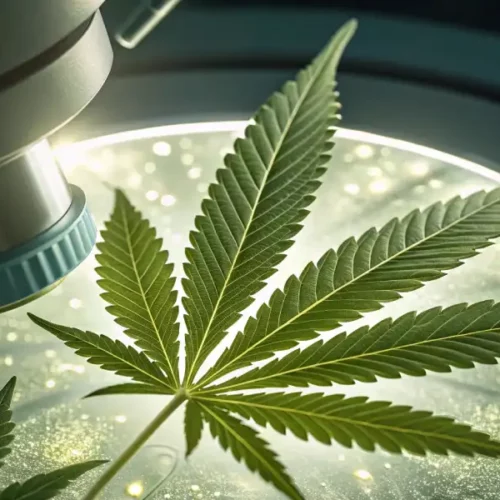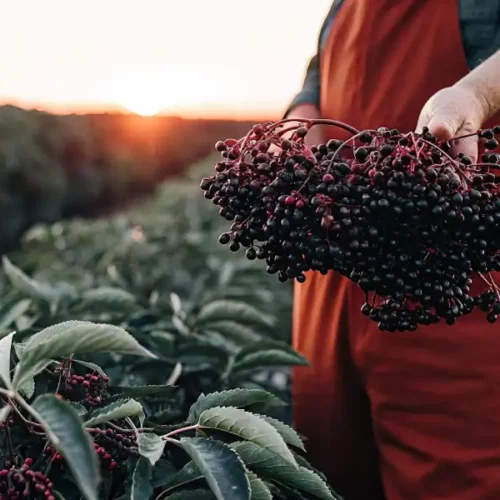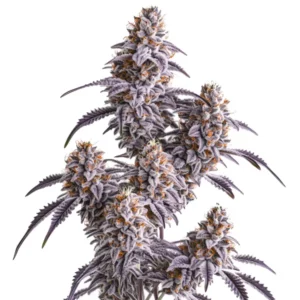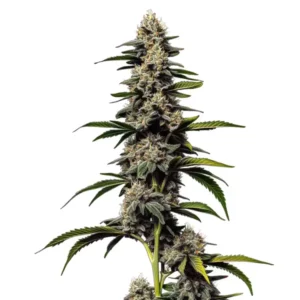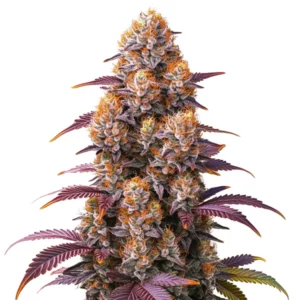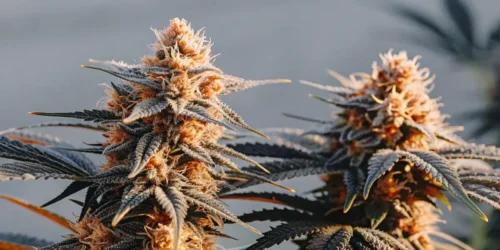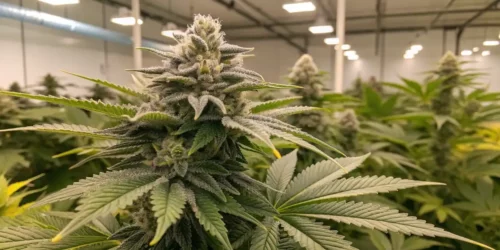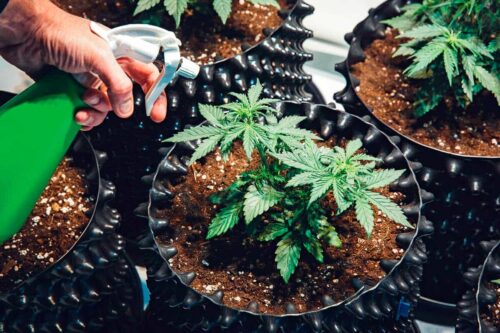Why Is My Weed Brown?. Cannabis enthusiasts often pride themselves on the vibrant green shades of their stash, a hallmark of freshness and quality. However, sometimes you might wonder: why does my weed turn brown when it previously looked vibrant and green? This phenomenon raises questions about the factors influencing cannabis coloration, from cultivation to storage.
Why is My Weed Brown?
Environmental Factors Affecting Cannabis Color
Cannabis plants are sensitive to their environment, with color being a direct reflection of their growing conditions. Light intensity, temperature fluctuations, and nutrient availability can all influence the pigmentation of your weed. High light levels can degrade chlorophyll faster, leading to a brownish appearance. Similarly, extreme temperatures, either too hot or too cold, can stress the plant, affecting its color. Lastly, an imbalance in essential nutrients, particularly nitrogen, can cause the leaves and buds to brown prematurely.
How Harvesting Time Affects Cannabis Color
Timing is everything when it comes to harvesting cannabis. Harvesting too early or too late can have significant effects on the color and quality of your weed. Plants harvested before their peak maturity may not have fully developed their color, leading to lighter or, in some cases, brown shades. On the other hand, waiting too long to harvest can result in the degradation of chlorophyll, which gives cannabis its green hue, leading to a darker, brownish appearance.
Storage Conditions and Their Impact on Weed Color
How you store your cannabis can greatly influence its color over time. Exposure to air, light, and improper humidity levels can accelerate the degradation of chlorophyll and other pigments, leading to a brown color. Keeping your weed in airtight containers, away from direct light, and at the correct humidity (around 62%) can help maintain its original color and potency.
Chlorophyll Breakdown and Color Change
Chlorophyll is the pigment responsible for the green color in plants, including cannabis. As cannabis ages, or if it is exposed to adverse conditions, the chlorophyll breaks down, leading to a change in color. This process can be natural and gradual but can be accelerated by factors like excessive light, heat, or improper curing processes.
How Curing Processes Affect Weed Color
The curing process is crucial for developing the flavor, aroma, and color of cannabis. Improper curing, such as too much humidity or poor ventilation, can lead to mold growth or an overly rapid breakdown of chlorophyll, resulting in buds turning brown during cure. Proper curing involves carefully controlling the moisture content in the environment, ensuring that the cannabis dries slowly and evenly, preserving its green color and preventing it from turning brown.
Quality Indicators for Cannabis
While color can be an indicator of quality, it’s not the only factor to consider. The smell, texture, and moisture content of cannabis are also important quality indicators. Fresh, high-quality weed should have a strong, pleasant aroma, be slightly sticky to the touch, and have a crisp but not dry texture. If your brown weed still possesses these qualities, it may still be of good quality.
Promos & Deals
The Science Behind Dark Brown Weed
When you observe your cannabis turning a shade of dark brown, it’s not just a visual transformation; it’s a tale of chemical changes, environmental interactions, and biological processes. The science behind this color shift can help demystify the phenomenon and guide users in maintaining the quality and longevity of their cannabis.
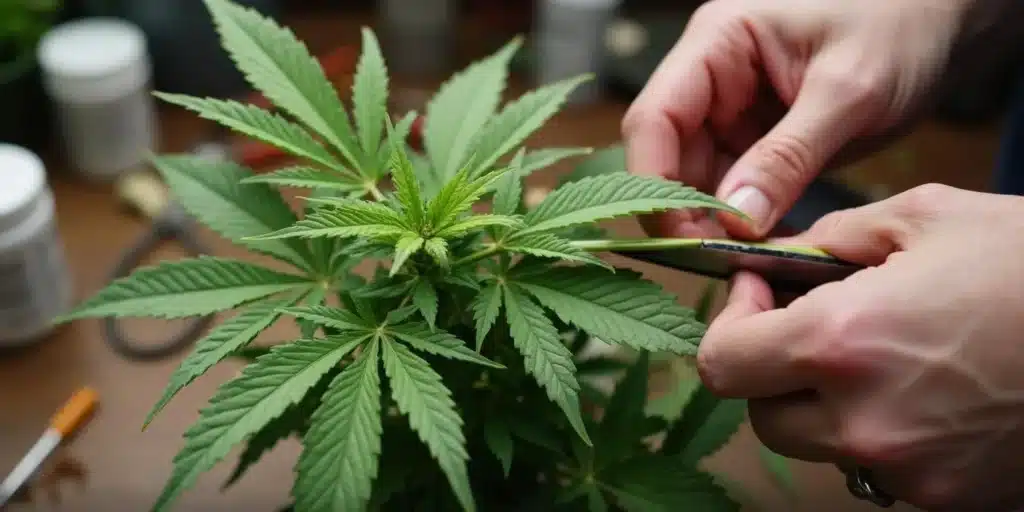
Chlorophyll Breakdown and Color Change
At the heart of the color change in cannabis is chlorophyll, the green pigment essential for photosynthesis. Chlorophyll absorbs light most efficiently in the blue and red parts of the electromagnetic spectrum, but not in the green, which is why plants, including cannabis, appear green to the human eye. As cannabis ages or is exposed to environmental stressors such as UV light, heat, or oxygen, chlorophyll begins to degrade. This degradation process is natural and occurs in all plants as they age or dry. In cannabis, as chlorophyll breaks down, the green color fades, and the underlying pigments, such as carotenoids and anthocyanins, become more visible, leading to hues of yellow, orange, brown, and sometimes even purples and reds, depending on the specific genetics of the plant and the environmental conditions it was exposed to.
How Curing Processes Affect Weed Color
Curing is a critical process in cannabis production that involves drying the cannabis flowers slowly under controlled conditions to preserve their potency and improve their taste and aroma. If done correctly, curing can enhance the quality of cannabis by allowing for the gradual breakdown of chlorophyll in a controlled environment, which can minimize the harshness of the smoke and improve flavor. However, if the curing process is rushed, improperly managed, or exposed to unfavorable conditions, it can lead to an uneven breakdown of chlorophyll and other compounds, causing the cannabis to turn brown prematurely. Poorly controlled humidity levels, for example, can lead to mold growth or overly dry conditions, both of which can significantly affect the color and quality of the weed.
Here’s how oxidation affects color change
Oxidation is another critical factor that contributes to the browning of cannabis. When cannabis is exposed to oxygen, whether during growth, harvesting, curing, or storage, it can undergo oxidative stress. This stress accelerates the breakdown of chlorophyll and other organic molecules, which helps explain why does weed turn brown under poor storage or curing conditions. THC, the primary psychoactive compound in cannabis, can also degrade into CBN (cannabinol) in the presence of oxygen, leading to a decrease in potency and a change in the effects produced by the cannabis.
Genetics and Environmental Impact
It’s essential to note that not all cannabis is destined to be green. The genetics of the cannabis plant play a significant role in determining its potential color palette. Some strains are genetically predisposed to exhibit darker leaves and buds, which can range from deep green to almost black, depending on the specific genetic makeup. Additionally, environmental factors such as temperature, light exposure, and nutrients during the growth phase can influence the final color of the weed. Cooler temperatures, for instance, can enhance the production of anthocyanins, leading to purple or reddish hues in some strains.
The transformation of cannabis to a dark brown color is a complex interplay of biological and environmental factors. While brown weed may raise concerns about quality and potency, the underlying science helps to demystify the process and can guide users in proper storage and handling practices to preserve their cannabis’s best qualities.
Is Brown Weed Safe to Use?
The color of cannabis often serves as a visual cue for its quality and freshness, leading many to question whether brown weed is safe for consumption. While the shade of brown alone does not necessarily dictate the safety of the cannabis, users also ask why is my weed dark and whether that affects quality.
Quality Indicators for Cannabis
Beyond color, assessing the quality of cannabis involves examining its smell, texture, moisture content, and trichome visibility. High-quality cannabis should have a distinct, pungent aroma indicative of its terpene profile, a slightly sticky texture from the trichomes (the tiny, crystalline structures on the surface of the leaves and buds that produce cannabinoids and terpenes), and a balanced moisture content that neither crumbles too easily (too dry) nor feels spongy (too moist). Brown cannabis that lacks these characteristics may have degraded due to improper curing, storage, or exposure to environmental factors, raising the question: why is the weed brown?
Health Implications of Using Brown Weed
From a health perspective, the primary concern with brown weed is not the color itself but the potential for mold and mildew, which can pose serious health risks, especially for individuals with compromised immune systems or respiratory conditions. Cannabis that has turned brown due to moisture issues or poor storage conditions may harbor harmful pathogens. Before using brown weed, inspect it closely for any signs of mold or mildew, such as a musty smell or visible spores. Consuming moldy cannabis can lead to respiratory issues and allergic reactions.
Another health consideration is the degradation of cannabinoids and terpenes over time. As cannabis ages and oxidizes, the THC content can diminish, converting to CBN (cannabinol), a cannabinoid with different effects, typically associated with a more sedative experience. While not directly harmful, this chemical change can alter the anticipated effects of the cannabis, potentially leading to a less satisfying or unexpectedly sedative experience.
Evaluating Potency and Experience
The potency of brown weed may be reduced, but it can still offer a pleasurable experience depending on the extent of degradation and personal tolerance levels. The presence of CBN and other degraded terpenes might provide a different set of effects, which some users might find desirable, especially for relaxation or aid with sleep.
How to Prevent Your Weed from Turning Brown
Maintaining the vibrant green color of cannabis not only appeals aesthetically but also indicates a preservation of the plant’s quality and potency. The transition of cannabis from green to brown can be indicative of various processes, including aging, degradation, or improper handling. To ensure your stash remains as fresh and potent as possible, here are several strategies to prevent your weed from turning brown:
Proper Storage Techniques
- Airtight Containers: One of the most effective ways to prevent cannabis from turning brown is by storing it in airtight containers. Oxygen plays a significant role in the degradation process, and minimizing its presence can slow down the aging of your weed.
- Control Humidity: Keeping cannabis at the right humidity level is crucial. Too much moisture can lead to mold, while too little can dry out the cannabinoids and terpenes, leading to a loss of potency and flavor. Humidity packs can help maintain an optimal level of 62% RH (relative humidity), ideal for preserving cannabis.
- Dark and Cool Environment: Light, especially UV light, can degrade cannabis over time. Storing your cannabis in a cool, dark place helps protect it from light exposure. A cupboard or a closet away from direct sunlight is an ideal storage location.
- Glass Containers: While plastic bags can be convenient, they’re not ideal for long-term storage as they can leach chemicals into the cannabis and don’t protect against humidity changes. Glass jars are inert and don’t impart any undesirable qualities to the cannabis.
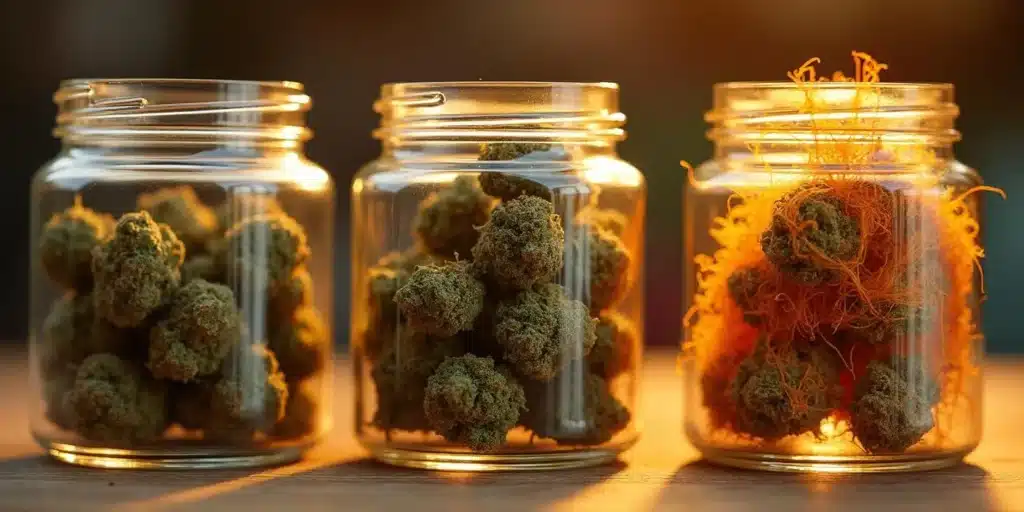
Optimal Harvesting Practices
- Harvest Timing: Harvesting cannabis at the right time is crucial for preserving its color and potency. Trichomes, the resin glands on cannabis, change color from clear to milky white to amber as they mature. Harvesting when trichomes are mostly milky white ensures maximum potency and preserves the green color.
- Gentle Handling: Rough handling of the buds can damage trichomes and accelerate degradation. Handling your harvest gently and minimizing contact will help maintain its quality and appearance.
The Importance of Controlled Curing
- Slow and Steady: Rushing the curing process can lead to uneven drying, which can affect the color and quality of your weed. A slow, controlled cure allows for a gradual breakdown of chlorophyll without compromising the plant’s cannabinoids and terpenes.
- Regular Monitoring: During curing, regularly check your cannabis for signs of mold or overdrying. Adjusting the environment as needed can prevent degradation and preserve the color and potency of the weed.
Preventative Measures During Growth
- Optimal Growing Conditions: Providing your cannabis with the right environment during its growth can influence its color stability. Adequate light, nutrients, and water are essential for healthy growth, which translates into a robust color and potency.
- Strain Selection: Some cannabis strains are more resistant to discoloration and degradation. Researching and selecting strains known for their stability and resilience can lead to a more satisfying long-term experience.
By identifying the factors that cause cannabis to brown and applying these preventative steps, enthusiasts can maintain the quality, potency, and vibrant green color of their stash for a longer period.
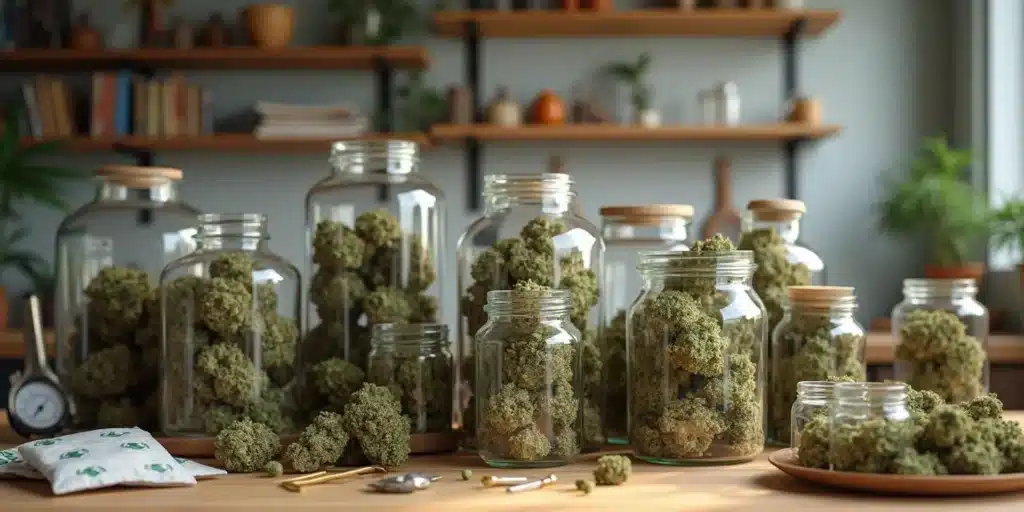
The Impact of Brown Weed on Potency
The color of cannabis is often seen as a visual cue for its quality and potency. When turns brown weed, it’s natural to question whether its effectiveness has been compromised. The relationship between the color change and the potency of cannabis involves delving into the chemistry of the plant and the factors that influence its cannabinoid content.
THC Degradation and Color Change
The potency of cannabis largely depends on its THC (tetrahydrocannabinol) content, the primary psychoactive compound. THC, like other cannabinoids, is subject to degradation over time and under certain conditions. The process of turning brown weed is often associated with the degradation of chlorophyll and other organic compounds, which can occur alongside the degradation of THC. When exposed to oxygen, light, or heat, THC slowly converts to CBN (cannabinol), a cannabinoid with much milder psychoactive effects. This conversion can lead to a perceived decrease in potency, as the psychoactive punch of THC diminishes.
Can Color Indicate Weed Potency?
While the color change in cannabis can signal exposure to less-than-ideal conditions, it’s not always a direct indicator of potency loss. Brown weed may still retain much of its THC content if the degradation processes have not significantly progressed. However, the visual shift from green to brown weed can be a sign that the cannabis has been exposed to factors that could potentially reduce its potency. It’s important to consider not just the color but also the context in which the color change occurred, including storage conditions and the age of the cannabis.
Other Factors Influencing Potency
It’s also crucial to recognize that potency is influenced by more than just THC content. The entourage effect, a principle suggesting that cannabis compounds work better together than in isolation, means that terpenes and other cannabinoids play significant roles in the overall effect of cannabis. These compounds can also be affected by the same conditions that cause to turn brown weed, potentially altering the overall experience beyond just a reduction in THC potency.
Assessing Potency Beyond Color
To accurately assess the potency of brown weed, one must look beyond color. Factors such as aroma, texture, and the presence of intact trichomes can provide more insight into the quality and potency of cannabis. Lab testing is the most accurate way to determine THC content, but for most consumers, evaluating the weed’s look, smell, and feel can offer useful clues about its condition and effectiveness.
Brown Weed vs. Green Weed
The color of cannabis can significantly influence a consumer’s perception of its quality and desirability. While green weed is often associated with freshness, vitality, and potency, brown weed can evoke concerns about degradation, aging, or inferior quality. However, the distinction between brown and green weed involves a complex interplay of factors beyond mere appearance. These nuances can help consumers make more informed choices about their cannabis consumption.
Visual Differences and What They Mean
The most apparent distinction between brown and green weed is, of course, their color. Green cannabis is typically seen as a sign of a healthy, well-cured plant rich in chlorophyll, the compound responsible for the green pigment in plants. On the other hand, brown weed may indicate several conditions, including overexposure to air, light, or improper curing and storage conditions that lead to chlorophyll degradation.
However, color alone doesn’t tell the whole story. The hue of cannabis can also be influenced by the strain’s genetics, growing conditions, and harvest time. Some strains naturally exhibit darker, even purplish or brownish hues, without any implications on their potency or freshness.
Taste, Aroma, and Experience Comparisons
- Taste: Green weed often offers a fresher, sometimes more vibrant flavor profile compared to brown weed, which may taste harsher or more muted. This difference is partly due to the preservation of terpenes, the aromatic compounds that also contribute to the flavor, in properly cured and stored green cannabis.
- Aroma: Similarly, the aroma of green weed tends to be stronger and more nuanced, reflecting a rich terpene profile. Brown weed, especially if the color change results from aging or exposure to adverse conditions, might have a less pronounced smell, indicating a possible loss of these volatile compounds.
- Experience: The overall consumption experience, including the effects felt, can vary between brown and green weed. While green cannabis might provide a more potent and complex effect due to the preservation of THC and other cannabinoids, brown weed’s efficacy might be compromised if the color change is due to THC degradation into CBN or loss of terpenes.
Quality and Potency Considerations
It’s crucial to understand that while color can be an indicator of quality, it’s not the sole determinant. The cultivation, curing, and storage processes play significant roles in determining the final quality and potency of cannabis, regardless of its color. Properly cured and stored brown weed from a high-quality strain can still be potent and enjoyable, especially if its coloration is genetic or a result of controlled environmental exposure.
Making Informed Choices
When choosing between brown weed and green weed, consumers should consider several factors beyond color:
- Smell and Moisture Content: These can be more reliable indicators of freshness and proper storage than color alone.
- Strain Information: The natural coloration and characteristics of specific strains can help set realistic expectations.
- Lab Testing Results: When available, these can provide the most accurate information regarding potency and cannabinoid profiles.
Reviving Brown Weed: Is it Possible?
While you can’t reverse the chemical changes that cause to turn brown weed, certain storage adjustments can help preserve the remaining quality and possibly enhance the smoking experience.
Expert Insights on Brown Weed
Cultivators and researchers both emphasize that while color can hint at certain qualities of cannabis, it’s the thorough knowledge of cultivation, harvesting, and storage practices that truly defines its quality.

